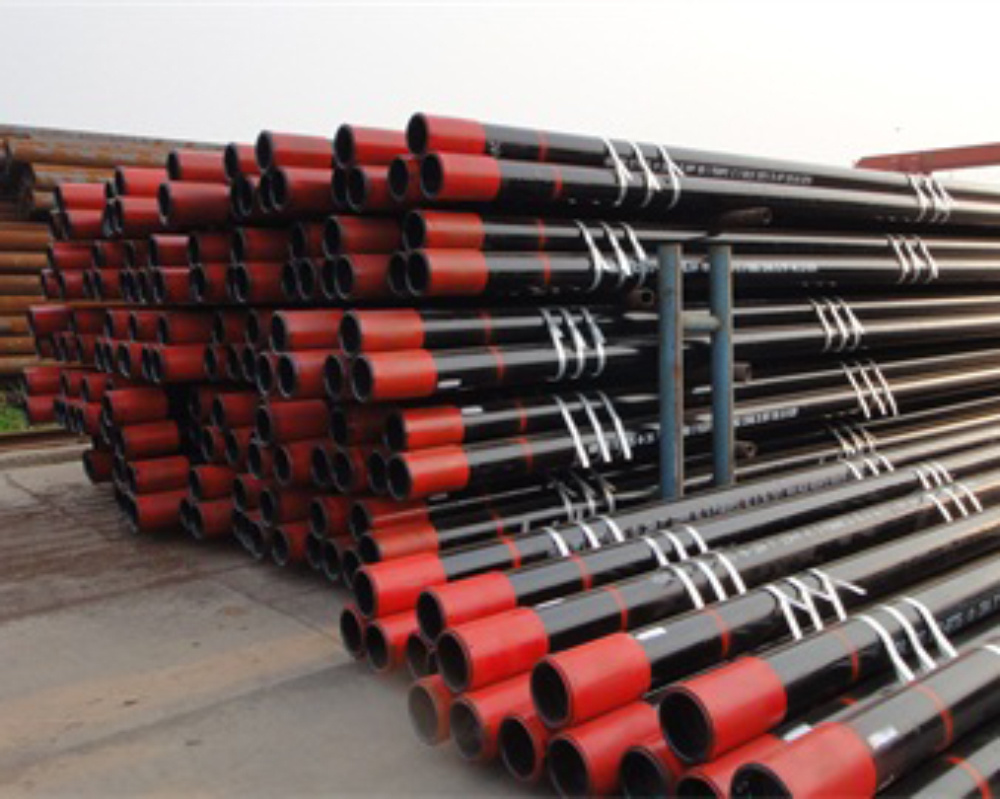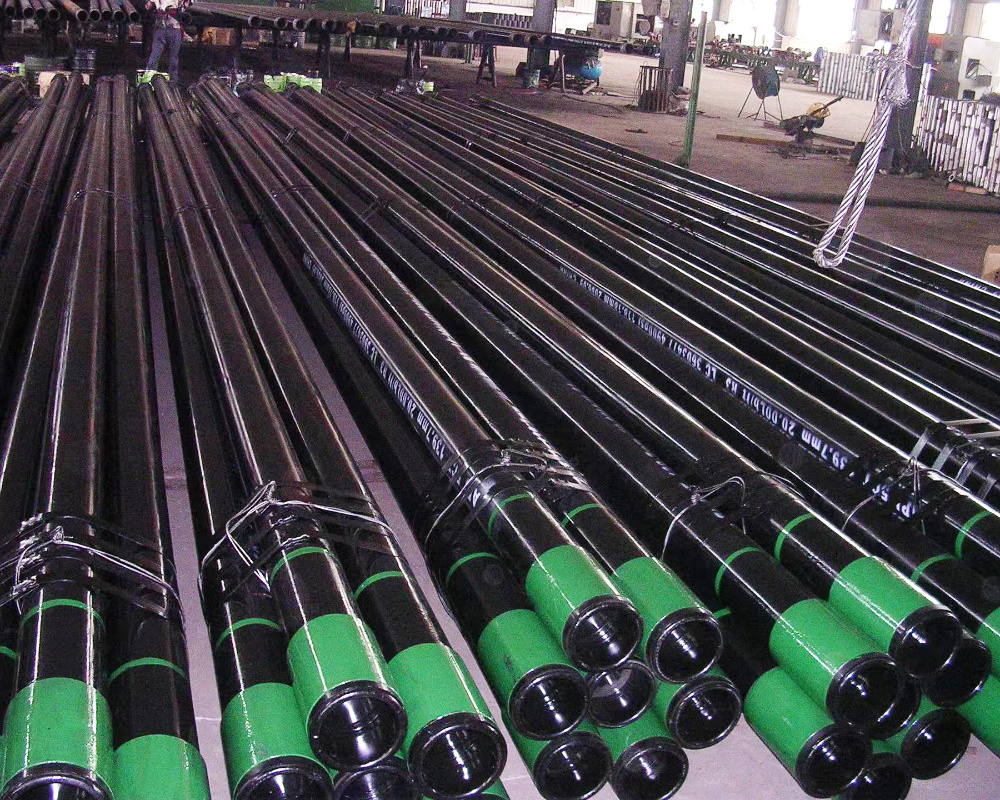Understanding ASTM A53 Seamless Pipe: A Comprehensive Guide for Construction Professionals
Understanding ASTM A53 Seamless Pipe: A Comprehensive Guide
Table of Contents
1. Introduction to ASTM A53 Seamless Pipe
2. Key Specifications of ASTM A53
3. Types of ASTM A53 Seamless Pipe
4. Applications of ASTM A53 Seamless Pipe in Construction
5. Manufacturing Process of ASTM A53 Seamless Pipe
6. Advantages of Using ASTM A53 Seamless Pipe
7. Maintenance and Inspection of ASTM A53 Seamless Pipe
Understanding ASTM A53 Seamless Pipe: A Comprehensive Guide
Table of Contents
1. Introduction to ASTM A53 Seamless Pipe
2. Key Specifications of ASTM A53
3. Types of ASTM A53 Seamless Pipe
4. Applications of ASTM A53 Seamless Pipe in Construction
5. Manufacturing Process of ASTM A53 Seamless Pipe
6. Advantages of Using ASTM A53 Seamless Pipe
7. Maintenance and Inspection of ASTM A53 Seamless Pipe
8. Frequently Asked Questions (FAQs)
9. Conclusion
1. Introduction to ASTM A53 Seamless Pipe
ASTM A53 seamless pipe is a critical component in the construction and structural engineering sectors. Defined by the American Society for Testing and Materials (ASTM), this standard outlines the specifications for pipe made from carbon steel and intended for mechanical and pressure applications. This guide provides a thorough understanding of ASTM A53 seamless pipe, detailing its specifications, types, applications, and maintenance requirements.
2. Key Specifications of ASTM A53
ASTM A53 covers several essential specifications pertaining to seamless pipes. The pipes are categorized based on their intended use and pressure ratings. Key specifications include:
2.1 Material Grades
ASTM A53 offers different grades, primarily Grade A and Grade B.
- **Grade A** is suitable for moderate strength applications.
- **Grade B**, having a higher yield strength, is more commonly used for structural applications.
2.2 Dimensions and Sizes
The ASTM A53 seamless pipe is available in various sizes, typically ranging from 1/8 inch to 26 inches in diameter. The standard wall thickness options enhance versatility in applications.
2.3 Chemical Composition
The chemical composition of ASTM A53 seamless pipe generally includes carbon, manganese, phosphorus, sulfur, and silicon. Understanding these constituents is vital for determining the pipe's suitability for specific environments.
2.4 Mechanical Properties
The pipes must meet specific mechanical properties, including yield strength, tensile strength, and elongation. For instance, Grade B pipe typically has a minimum yield strength of 35,000 psi.
3. Types of ASTM A53 Seamless Pipe
There are primarily two types of ASTM A53 seamless pipes:
3.1 Type S: Seamless Pipe
Type S seamless pipes are manufactured without welding, providing a strong and uniform structure, making them ideal for high-pressure applications.
3.2 Type E: Electric Resistance Welded Pipe
Though Type E pipes are welded, they still fall under the ASTM A53 specifications and are commonly used in lower-pressure applications.
4. Applications of ASTM A53 Seamless Pipe in Construction
ASTM A53 seamless pipe is widely utilized across various sectors due to its durability and strength. Some common applications include:
4.1 Water and Gas Transmission
These pipes are widely used in water and gas distribution systems, thanks to their ability to withstand high pressure and corrosion.
4.2 Structural Applications
The robust characteristics of ASTM A53 seamless pipe make it suitable for structural applications in buildings, bridges, and other construction projects.
4.3 Oil and Gas Industry
In the oil and gas sector, ASTM A53 pipes serve as critical conduits for transporting fluids under high pressure.
5. Manufacturing Process of ASTM A53 Seamless Pipe
The production of ASTM A53 seamless pipe involves several stages:
5.1 Steel Production
The process begins with producing steel ingots or billets which are subsequently heated and elongated to form seamless pipes.
5.2 Piercing and Elongation
The heated billets are pierced and elongated through extrusion or rotary piercing to create hollow sections.
5.3 Heat Treatment
Heat treatment processes are employed to enhance the mechanical properties of the pipes, increasing their strength and durability.
6. Advantages of Using ASTM A53 Seamless Pipe
The adoption of ASTM A53 seamless pipe in construction projects comes with numerous advantages:
6.1 Superior Strength and Durability
The seamless construction provides enhanced strength, making it suitable for high-stress environments.
6.2 Corrosion Resistance
When properly coated or treated, ASTM A53 seamless pipes offer excellent resistance to corrosion, prolonging service life.
6.3 Versatility in Applications
With a range of sizes and grades, these pipes can be utilized in various applications, from structural to industrial uses.
6.4 Cost-Effectiveness
Due to their durability and strength, ASTM A53 seamless pipes often lead to reduced maintenance costs over time.
7. Maintenance and Inspection of ASTM A53 Seamless Pipe
To ensure longevity, regular maintenance and inspection are essential:
7.1 Routine Inspections
Periodic inspections allow for the early detection of any issues such as corrosion or structural damage.
7.2 Cleaning and Coating
Regular cleaning and the application of protective coatings can help mitigate corrosion risks.
7.3 Documentation and Record-Keeping
Maintaining detailed records of inspections and maintenance activities is crucial for tracking the performance and safety of the piping system.
8. Frequently Asked Questions (FAQs)
8.1 What is the difference between ASTM A53 Grade A and Grade B?
Grade A is suitable for lower strength applications, while Grade B features higher yield strength, making it preferable for structural applications.
8.2 How do I determine the right size of ASTM A53 seamless pipe for my project?
Choosing the right size involves considering the pressure requirements, flow rate, and specific application needs.
8.3 Are ASTM A53 seamless pipes suitable for high-temperature applications?
While ASTM A53 pipes can handle moderate temperatures, for high-temperature applications, other specifications like ASTM A106 may be more appropriate.
8.4 Can ASTM A53 pipes be welded?
Yes, although ASTM A53 is primarily used as a seamless pipe, it can be welded with proper techniques, especially for Type E.
8.5 What industries commonly utilize ASTM A53 seamless pipe?
Industries such as construction, oil and gas, water supply, and chemical processing extensively use ASTM A53 seamless pipes.
9. Conclusion
In summary, **ASTM A53 seamless pipe** stands as a vital element in the construction and engineering landscape. With its robust specifications, diverse applications, and a myriad of advantages, it is no wonder that this pipe is a preferred choice among professionals in the industry. By understanding the intricacies of ASTM A53 seamless pipes, construction teams can make informed decisions that enhance project outcomes and ensure long-term reliability. Proper maintenance and inspection further optimize the performance of these pipes, solidifying their role as a cornerstone in modern construction practices.
TAG:
Related Posts
Understanding Carbon Steel Seamless Pipes: Essential Insights for Construction Professionals
Carbon steel seamless pipes are an integral component in the construction and decorative materials industry, particularly in the realm of building pipes. These pipes are manufactured without seams, which makes them highly durable and reliable for various applications. Understanding their properties, advantages, and applications can greatly enhance decision-making for professionals in the field.
On









